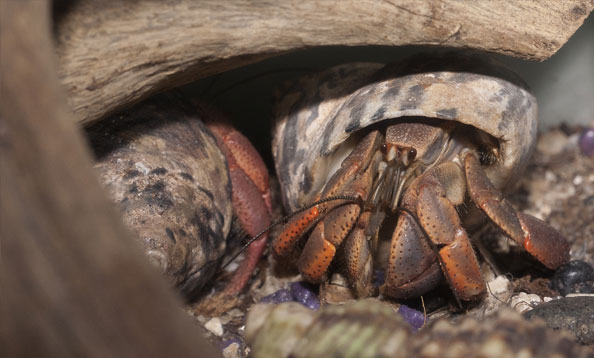Land Hermit Crab
Coenobita clypeatus

Fascinating Facts
- As the hermit crab grows in size, it has to find a larger shell and abandon the previous one. This habit of living in a second hand shell gives rise to the popular name “hermit crab”, by analogy to a hermit who lives alone.
- Hermit crabs have been heard making croaking sounds.
Physical Characteristics
Most species have long, spirally curved abdomens, which are soft, unlike the hard, calcified abdomens seen in related crustaceans. The vulnerable abdomen is protected from predators by a salvaged empty seashell carried by the hermit crab, into which its whole body can retract.
Habitat/Diet
Land hermit crabs of many different species are found in tropical areas of the Indo-region, the western Atlantic, and the western Caribbean. They live close to the shoreline and must have access to land and water. In the wild, hermit crabs are omnivorous scavengers, meaning they eat whatever they can find. At the Zoo, they are fed fish food, crab food, and various fruits and vegetables.
Social Behavior
Hermit crabs are nocturnal. They are most active during the night and they truly love the dark.
As a hermit crab grows, it molts, shedding its exoskeleton and creating a new, larger one. A crab builds up enough water pressure in its body to split the old skin. A crab may eat its molted skin, possibly for its calcium, vitamins, and minerals.
Status In The Wild
The land hermit crab is common and not endangered.
Other
They can be found at the Insect Zoo.
